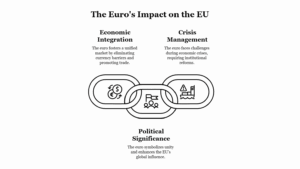The Theory of Relative Deprivation is a sociological concept that helps explain why individuals or groups feel discontented and why such feelings can lead to collective action or social movements. Unlike absolute deprivation, which refers to a lack of basic resources, relative deprivation is based on perceived inequality — when people compare themselves to others and feel that they are unfairly disadvantaged.
This theory has been influential in understanding the motivations behind protests, revolts, and large-scale movements, especially those led by communities that may not be impoverished in absolute terms but feel marginalized or excluded relative to others.
Definition and Core Concept:
Relative deprivation refers to the discontent that arises when individuals or groups perceive a gap between what they believe they deserve and what they actually receive, especially in comparison with others in society. The feeling is subjective and rooted in social comparison rather than objective material conditions.
The term was first used by sociologist Samuel Stouffer and his colleagues in their study of soldiers during World War II. However, the theory gained prominence with the work of sociologists like Ted Robert Gurr, who elaborated on it in his book Why Men Rebel (1970). Gurr argued that the potential for political violence and rebellion increases when there is a significant gap between expected and actual living conditions.
Components of Relative Deprivation:
- Value Expectations:
- These are the goods, services, opportunities, or privileges that people believe they are entitled to. Expectations are shaped by societal norms, media, education, and exposure to other communities.
- Value Capabilities:
- These refer to what individuals or groups are actually able to attain or access. A significant gap between expectations and capabilities creates a sense of deprivation.
- Comparison:
- People compare their status with others — peers, neighbors, different social groups, or even their own past conditions.
- If they perceive others as more advantaged despite equal or lesser effort, frustration and resentment may arise.
- Perceived Injustice:
- The feeling that the deprivation is not due to chance but to structural injustice, discrimination, or exclusion increases the likelihood of protest.
Types of Relative Deprivation:
- Egoistic Deprivation:
- When an individual feels deprived in comparison to another individual or group within the same social setting. For example, an employee feeling underpaid compared to colleagues.
- Fraternalistic Deprivation:
- When a group feels collectively disadvantaged compared to another group. This form of deprivation is more likely to lead to organized social movements, such as caste-based or ethnic movements.
Relevance to Social Movements:
The theory of relative deprivation explains why social unrest can arise even in economically growing societies. As expectations rise due to increased awareness or exposure, even stable or improving material conditions may not prevent discontent.
Some examples include:
- Dalit Movement in India: Despite legal equality, Dalits continue to experience social discrimination. Their awareness of constitutional rights and comparison with upper castes fuels the demand for social justice.
- Backward Class Movements: Groups that perceive themselves as unfairly excluded from educational and economic opportunities demand affirmative action and reservations.
- Youth Movements: Educated youth who remain unemployed often feel betrayed by the system, leading to frustration and protest.
Criticism of the Theory:
While the theory offers a powerful explanation for social discontent, it is not without criticism:
- Subjectivity: The theory is based on perceptions, which can vary widely and may not always reflect actual deprivation.
- Lack of Predictability: Not all those who feel relatively deprived participate in movements; hence, the theory alone cannot fully predict collective action.
- Neglect of Structural Factors: It sometimes underplays the role of economic structures, political institutions, and historical processes in shaping deprivation.
Conclusion:
The Theory of Relative Deprivation remains a valuable tool in understanding the roots of social movements. By focusing on perceptions of inequality and injustice rather than just material poverty, it explains why movements emerge even among relatively well-off or aspirational groups. However, to gain a full picture of collective action, it must be used in conjunction with other theories that consider political opportunities, resource mobilization, and cultural factors.







Leave a Reply